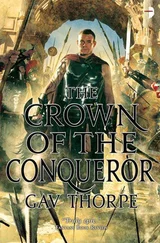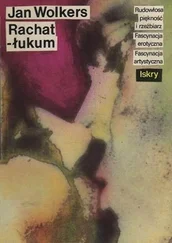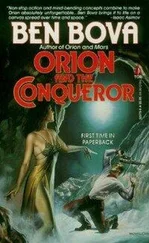There were a few of the programmes in the Thinking Big series the symbolism of which was known only to Jonas Wergeland. He derived an almost childish pleasure from this: to know that despite all the bouquets and brickbats no one really knew what he had had in mind. These film sequences harboured a secret meaning.
After the episode on Edvard Grieg was shown — a programme that also caused quite a stir in Japan — Jonas Wergeland was much complimented on the fabulous scenes from Karlsbad. People who had been to the old spa town were even moved to ask whether it had been filmed at this or that hotel. Jonas merely smiled and kept his eyes on the ground. Others actually went to Karlsbad because of what they had seen in this programme. To Jonas Wergeland, such responses proved better than anything else just how little it took to hypnotize people — sometimes he felt he could have got away with presenting his programmes as puppet shows.
The film crew had never been near Karlsbad. The sequences showing Edvard Grieg at the spa were shot in the Bank of Norway. Yes, that’s what I said, Professor: the Bank of Norway.
Jonas Wergeland had originally planned to build the programme on Grieg around his Concerto in A Minor, since that had been conceived abroad and thus illustrated perfectly the liberating effect which going out into the world had had on the talents of Norwegian artists. Jonas even made an unofficial reconnaissance trip to Denmark, to Søllerød on Zealand, where Grieg had written the piano part for the concerto, but he changed his mind about this, which is to say: he could milk no original ideas from this first flash of inspiration. There was also something about the predictability and opportunism of this approach which he did not feel happy with.
In the end, after giving more thought to the question of how to reveal Grieg’s essential dilemma, Jonas decided to set the key scene in Karlsbad, now Karlovy Vary, in the west of the Czech Republic, the famous spa where Grieg stayed, on doctor’s orders, on several occasions, the first of these in the summer of 1881. There was one snag, however: the budget wasn’t looking too healthy. There was no way they could go to Karlovy Vary. It was at this point that Jonas had the idea of looking around Oslo, to see if they could find a building, or even just a room, which would present some semblance of Karlsbad, or at any rate some aspect of Karlsbad; and it was while conducting this search that he was fortunate enough to come across the majestic, almost rocklike, old building on Bankplassen, which happened to be standing empty right then: the Bank of Norway having moved into its superb new premises next door — a jewel in Norway’s crown, if I may say so, and well worth the controversial price paid for it — and the work of converting the old building into the Museum of Contemporary Art not yet begun. All the pieces fell into place. As it happens, this also supported one of Jonas Wergeland’s theories: you can find any place in the world in Norway if you look hard enough.
The programme opened with some stills of Karlsbad in its heyday in the nineteenth century: exteriors of the fine buildings along the banks of the River Teplá, of the Mill Colonnade and a couple of hotels, and of the most famous spring, the Strudel, shooting geyser-like over thirty feet into the air; then the camera panned across a façade of roughly hewn stone before passing through massive and imposing bronze doors flanked by lions’ heads and into a magnificent entrance hall, and no one, absolutely no one suspected that this too was not an authentic shot from Karlsbad, from one of the luxurious sanatoriums which were still in operation.
The year, then, is 1881. Grieg is thirty-eight years old and seriously run down. For some time he has had to conduct and give concerts in order to make ends meet. He has had no chance to concentrate on what he wants to do more than anything else: to compose. Not only that, but his marriage is in difficulties. All of which leaves him, as he himself writes in a letter, with ‘chronic gastritis, enlarged intestines, a swollen liver and the devil knows what else besides’. Add to this that he has only one good lung. Edvard Grieg is not just in Karlsbad, he is also at a crucial turning-point in his life. What will he do now? Although of course it’s easy to guess what he does: he drinks the curative mineral waters, takes different types of bath, follows a strict diet, is given massages, goes for walks. But what is he thinking?
In the first scene Grieg was seen walking slowly along corridors, past highly-polished walls of different types of stone: inside the Bank of Norway — or rather, inside one of Karlsbad’s elegant sanatoriums, a place of gleaming mirrors and brass, with ornate stucco ceilings and doors and furniture in dark-stained pine with bronze fittings. At one point Grieg, frail looking and bent, as if carrying a load of questions on his back, turned into the vaulted central corridor. Here, at the foot of the labradorite sweep of the main staircase, a large orchestra was entertaining the residents. And the musicians were not playing just anything. No, Jonas had them perform a piece from the Viennese classical repertoire, the thorn in Grieg’s side. And the accompanying shots of the other residents made it excessively clear that they belonged to Europe’s wealthy upper classes, that they were members of German high society, a kind of overblown symphonic culture. One saw Grieg’s despair, his unhappiness, saw how the music tormented him, how it hurt him almost physically, like a painful bout of indigestion. Jonas Wergeland wanted to give viewers the impression that Greig, this little man weighing hardly more than eight stone, was in the Hall of the Mountain King, surrounded by trolls; that he was filled with a constant temptation — embodied by the orchestra — to make a Peer Gynt slash in his eye. Or his ear.
In the next scene, the programme’s hub — in stark contrast to the previous turbulent sequence — Grieg is seen lying in a solitary bathtub in an enormous chamber. In actual fact he was in the very vault of the old Bank of Norway, in the basement, where the bars of gold had once been kept. But to the viewers, this was a room in a sanatorium in Karlsbad — an illusion underpinned by the pillars and the mosaic floor. One saw Grieg inside the Troll Mountain, Grieg held spellbound, imprisoned in Europe, in a health resort, where symphonic music, the musical idiom of German Romanticism, reverberated indoctrinatingly off the stone walls. Grieg lay as if dead, eyes closed, in the bathtub, only one hand moving, rubbing his lucky charm, a frog which he always rubbed when stepping up to the podium, to calm his nerves. Close-ups of his fingers around the frog, a creature of fairy tale, bore witness to Grieg’s fervent desire, or prayer, for change. One could positively feel the pressure to which Jonas Wergeland subjected his hero, how he got Grieg to assume a character other than the usual stereotype.
I don’t know whether you remember it, Professor, that memorable shot: Edvard Grieg up to his neck in water in a room that seems far, far too big, Grieg at the blackest moment in his life, knowing that he only has one good lung when he has need of two. It is several years since he created a work on the so-called grand scale. A few vehement voices had accused him of being totally wanting in compositional technique, of having no mastery of the classical forms. The introductions to a number of ambitious works are just lying there, like torsos. Grieg is afraid that he has lost the power to create music of a true dramatic dimension, that something in him has stagnated; his confidence is at a low ebb; he is worried that he will never be more than a small-town genius.
Grieg lies listlessly in that bathtub — the Japanese loved this scene — encircled by pillars in a vast, vaulted chamber. By editing in a succession of different images, Jonas Wergeland made it clear to the viewer that Grieg was thinking about the vital early inspiration he had received, not least from Rikard Nordraak in Copenhagen. Had he betrayed that vision of writing Norwegian music that was not an imitation of the German romantic style? Grieg lies in a bathtub in a sanatorium, mentally depressed, in two minds. Because although he felt tempted to write symphonies, he was still moved, more strongly than ever in fact, by a desire to explore the musical style of his native land; he had not abandoned the idea of giving expression to the ‘hidden harmonies’ in Norwegian folk music. Grieg lies in the middle of Europe, feeling torn, you might say, between the sonata and the cattle call.
Читать дальше











